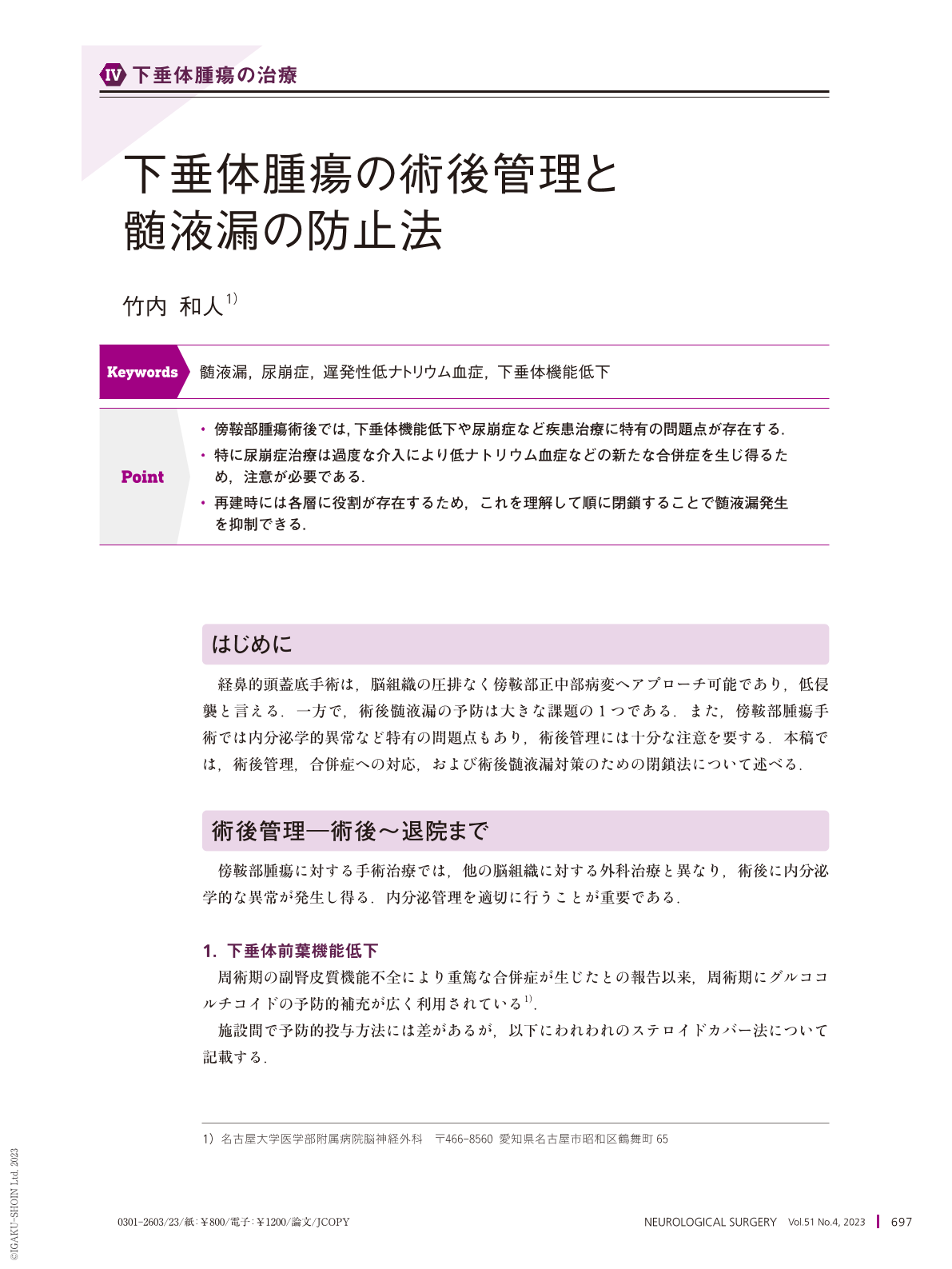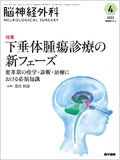Japanese
English
- 有料閲覧
- Abstract 文献概要
- 1ページ目 Look Inside
- 参考文献 Reference
Point
・傍鞍部腫瘍術後では,下垂体機能低下や尿崩症など疾患治療に特有の問題点が存在する.
・特に尿崩症治療は過度な介入により低ナトリウム血症などの新たな合併症を生じ得るため,注意が必要である.
・再建時には各層に役割が存在するため,これを理解して順に閉鎖することで髄液漏発生を抑制できる.
Endocrine deficiency can occur after the surgical treatment of parasellar lesions. In particular, management of the fluid-electrolyte balance is important, without which serious neurologic complications can occur. Delayed massive epistaxis can occur after transnasal surgery. Its thorough understanding is required for adequate treatment. The first part of this article focuses on the postoperative management and prevention of life-threatening complications.
Postoperative spinal fluid leakage is the biggest concern in transnasal skull base surgery. To avoid it, various methods of skull-base reconstruction have been reported, the basic principle of which is a multilayered reconstruction. Each layer plays its own role, and understanding these roles enables a safe and effective reconstruction. In Japan, suture-based skull-base reconstruction is widely used, but suturing the dura in the deep surgical field is considered to be time-consuming and complicated. The second part of the article describes the various reported reconstruction methods, characteristics of the reconstruction materials, and some simple dural suture techniques.

Copyright © 2023, Igaku-Shoin Ltd. All rights reserved.


